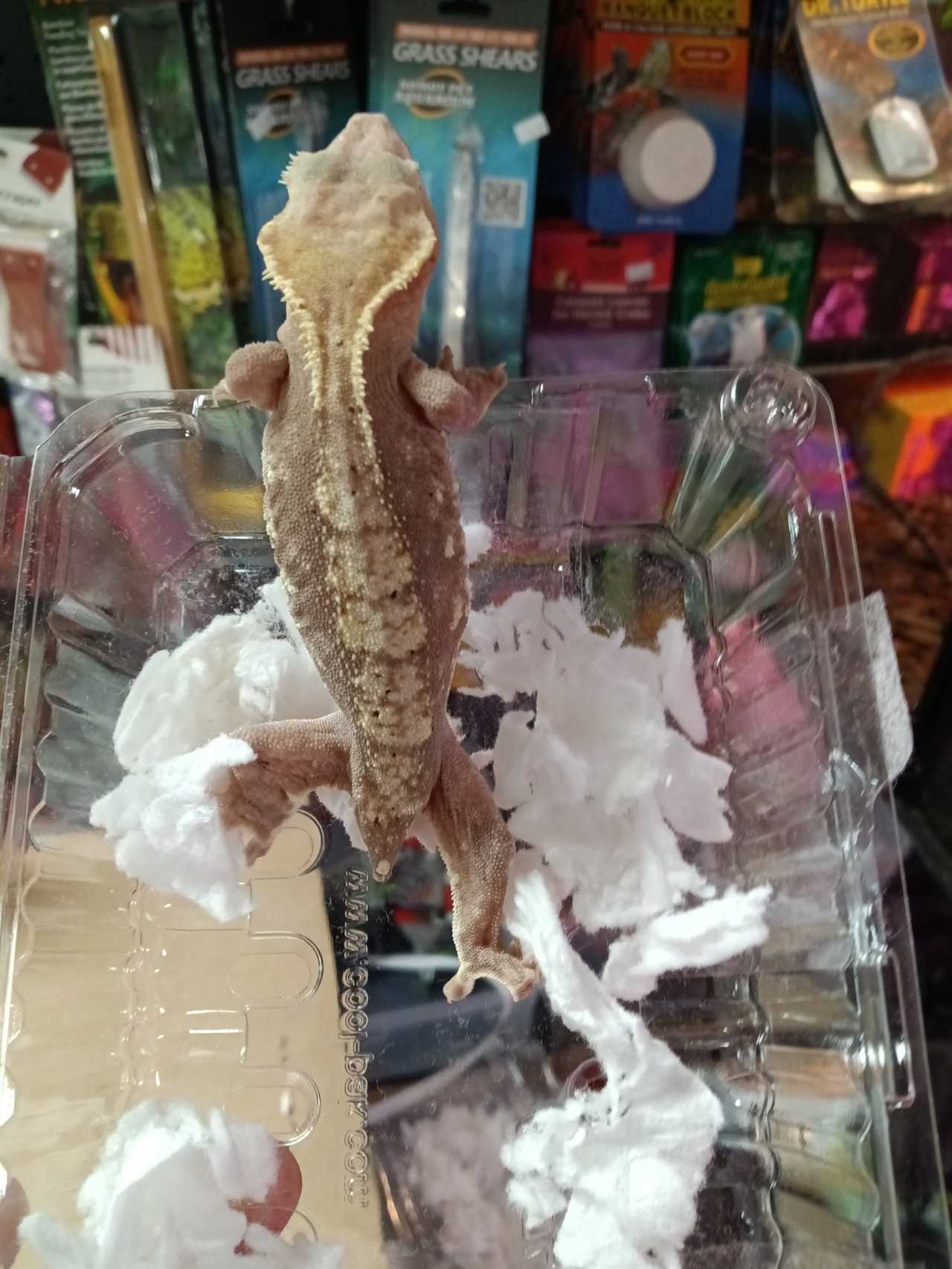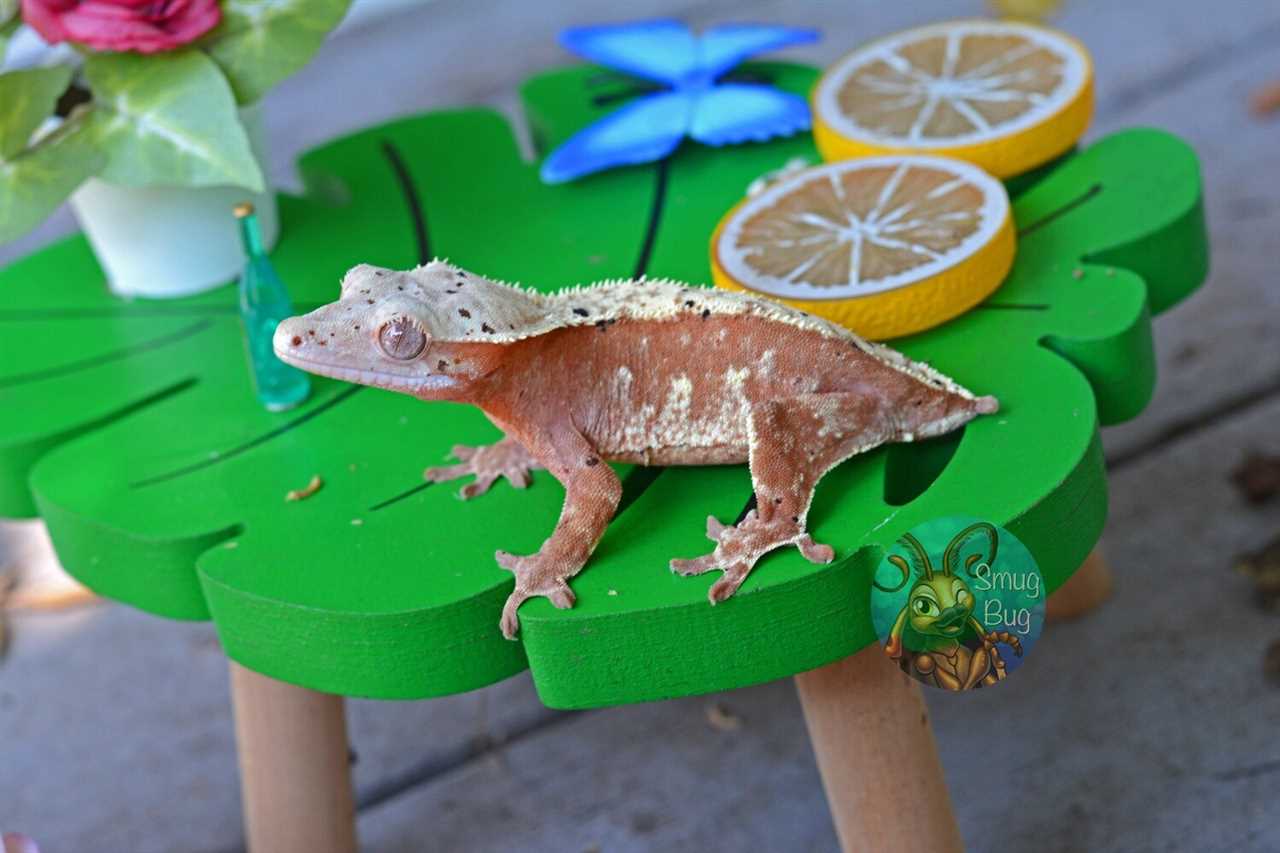
The crested gecko, particularly the female, is known for its stunning and vibrant colors. With a wide range of patterns and hues, these geckos are truly a sight to behold. From vibrant oranges and blues to striking reds and greens, female crested geckos are a visual delight. Their unique appearance makes them a popular choice among reptile enthusiasts and collectors alike.
The Female Crested Gecko
A crested gecko is a small and colorful lizard that has become a popular exotic pet. Among the crested gecko species, female crested geckos are highly sought after due to their unique characteristics and behavior.
Appearance and Coloration
Size and Lifespan
On average, female crested geckos grow to be around 7 to 9 inches (18 to 23 centimeters) in length. Their tails make up a significant portion of their body length. The lifespan of a female crested gecko can range from 10 to 20 years, depending on their care and overall health.
Behavior and Temperament
Housing and Care
Diet and Feeding
The diet of a female crested gecko primarily consists of fruit-based powdered diets. These diets provide the necessary nutrients and vitamins for their overall health. In addition to powdered diets, they can also be offered small insects such as crickets and roaches, which should be dusted with calcium powder for added nutritional benefits.
Overall, female crested geckos are fascinating and beautiful pets. With proper care and attention to their specific needs, they can thrive in captivity and provide their owners with years of enjoyment.
Caring for a Female Crested Gecko
Housing
Temperature and Humidity
Feeding
Proper nutrition is crucial for the health of a female crested gecko. Their diet mainly consists of commercially available powdered gecko diets, which provide all the necessary vitamins and minerals. These diets should be supplemented with live insects, such as crickets or mealworms, to provide enrichment and mimic their natural feeding behavior. Make sure to gut-load the insects before feeding them to the gecko to ensure they are nutrient-rich.
Handling
| Aspect | Details |
|---|---|
| Lifespan | Average lifespan of 15-20 years |
| Size | Adult females can reach around 7-8 inches (18-20 cm) in length |
| Habitat | Tropical rainforests of New Caledonia |
| Behavior | Nocturnal, arboreal, and solitary |
| Health concerns | Metabolic bone disease, shedding difficulties, respiratory infections |
| Reproduction | Egg-laying, typically 2 eggs per clutch |
Caring for a female crested gecko requires attention to detail and a commitment to provide a suitable habitat. With the right care and environment, your female crested gecko can thrive and live a long, healthy life.
1. Social Behavior
2. Feeding Behavior

3. Reproductive Behavior
4. Breeding Behavior
5. Territorial Behavior
Providing the Ideal Habitat for Your Female Crested Gecko
Creating the perfect habitat for your female crested gecko is essential for her health and well-being. These exotic lizards thrive in a terrarium that closely mimics their natural environment. By providing the right conditions, you can ensure that your pet gecko is happy and healthy.
The first thing to consider when setting up the terrarium is the size. Female crested geckos require a spacious enclosure to climb, explore, and exercise. A terrarium that is at least 20 gallons in size is recommended for a single gecko. If you plan to house multiple geckos together, a larger terrarium will be necessary.
Crested geckos are arboreal, meaning they spend most of their time in trees. Provide plenty of climbing opportunities by adding branches and vines to the terrarium. These will not only encourage natural behaviors but also serve as hiding spots and perches for your gecko. Ensure that the branches are securely positioned to prevent any accidents or injuries.
Maintaining the proper temperature and humidity is crucial for the health of your female crested gecko. Geckos require a temperature range of 72-80°F during the day and slightly cooler temperatures at night. Use a reptile-specific heat mat or ceramic heat emitter to regulate the temperature in the terrarium. Place a thermometer in the enclosure to monitor the heat levels accurately.
Lastly, provide a shallow dish of fresh water for your female crested gecko. This not only ensures hydration but also offers a place to soak if needed. Be sure to change the water daily to prevent bacteria growth.
In summary, creating an ideal habitat for your female crested gecko is essential for her well-being. Provide a spacious terrarium with proper substrate, climbing opportunities, and a comfortable temperature and humidity level. By mimicking their natural environment, you can ensure that your pet gecko thrives and lives a happy, colorful life.
Feeding and Nutrition for Female Crested Geckos
Proper nutrition is essential for the health and well-being of your pet crested gecko, especially for females. Female crested geckos have specific dietary requirements, and providing them with a balanced and varied diet is crucial.
One of the primary food sources for female crested geckos is fruit. They are omnivorous, meaning they eat both insects and fruits in the wild. In captivity, providing a variety of fruits such as papaya, mango, banana, and apricot can help ensure they receive the necessary nutrients.
Offering food in a shallow dish or placing it on artificial leaves within their terrarium can simulate their natural feeding behavior. This helps prevent ingestion of any substrate or bedding material, which can be harmful to their digestive system.
Hydration
Crested geckos may also appreciate a small shallow water dish in their terrarium, although they primarily rely on licking droplets for hydration. Ensure that the water is clean and changed regularly to prevent the growth of bacteria.
Variety and Supplements
Offering a variety of food items is key to providing a well-rounded diet for female crested geckos. This helps ensure they receive all the essential nutrients they need. Experiment with different types of fruits and insects to provide enrichment and prevent dietary monotony.
Health and Wellness of Female Crested Geckos
Keeping your female crested gecko healthy and well is crucial for her overall well-being and longevity. These colorful lizards make wonderful pets but require proper care to ensure they thrive in captivity.
Diet: Providing a nutritious diet for your female crested gecko is essential. They are primarily insectivorous but can also consume fruit-based diets. A balanced diet consists of a variety of gut-loaded insects, such as crickets and roaches, as well as commercially available crested gecko diets. These diets are specifically formulated to meet their nutritional needs.
Hydration: Female crested geckos require proper hydration to maintain their health. They obtain most of their water from licking moisture off leaves and decor in their terrarium. A shallow water dish can also be provided, although they mostly rely on water droplets created by misting the enclosure. It’s crucial to ensure the humidity level in the terrarium is between 60-80% to prevent dehydration.
Temperature and Lighting: Maintaining the correct temperature and lighting is essential for the health of female crested geckos. The optimal temperature range is between 72-78°F (22-25°C) during the day and slightly cooler at night. A reptile-specific heat mat or low-wattage heat lamp can be used to achieve the desired temperature. UVB lighting is not usually necessary but can be beneficial for overall health and calcium metabolism.
Cleanliness: Keeping the terrarium clean is crucial to prevent the buildup of harmful bacteria. Regular spot cleaning should be done to remove any feces or uneaten food. A full cleaning of the enclosure should be done every few weeks, including replacing the substrate and disinfecting the decor. This helps maintain a healthy environment for your female crested gecko and prevents the risk of infections.
Reproduction and Breeding of Female Crested Geckos
Maturity and Sexual Dimorphism
Female crested geckos reach sexual maturity at around 18 to 24 months of age. Unlike males, females do not develop the prominent hemipenal bulges at the base of their tails. Instead, they have a smaller and more rounded tail base. Additionally, mature female crested geckos tend to have a larger body size compared to males.
Pairing and Courtship
During courtship, the male will display various behaviors to attract the female’s attention. These can include head bobbing, chirping, or even biting the female’s tail gently. If the female is receptive, she will respond by lowering her head and body, signaling her readiness to mate.
Egg Laying and Incubation
The female will lay her eggs in a suitable nesting spot within her enclosure. This can be a moist substrate or a specialized egg-laying box filled with a moist vermiculite mixture. The eggs should be carefully removed and placed in an incubator set at a specific temperature and humidity level for successful development.
Parental Care
Female crested geckos do not provide parental care for their eggs or offspring. Once the eggs are laid, it is the owner’s responsibility to monitor and care for them during the incubation period. Proper temperature and humidity levels must be maintained to ensure the eggs develop properly.
After the eggs hatch, the newborn geckos should be given time to develop and grow in a separate enclosure. Owners should ensure they provide suitable housing and a proper diet to support the offspring’s growth and development.
Tips for Handling Your Female Crested Gecko
1. Start slowly

2. Use gentle and steady movements
3. Handle during the day
Female crested geckos are generally more active at night, so it is best to handle them during the day when they are more awake and alert. This can help prevent unnecessary stress and make the handling experience more enjoyable for both you and your gecko.
4. Watch for signs of stress
5. Wash your hands before and after handling
| Female Crested Gecko Handling Tips: |
|---|
| Start slowly |
| Use gentle and steady movements |
| Handle during the day |
| Watch for signs of stress |
| Wash your hands before and after handling |
By following these tips, you can ensure a positive handling experience for both you and your female crested gecko. Remember to always prioritize her well-being and comfort above all else.

I’m Lena Adams—a product of an unconventional upbringing in the African wilderness. My father, a daring explorer of African wildlife, sparked my fascination with reptiles, a passion that intertwined with the tragic loss of my mother during an expedition, leaving an indelible mark on my life. Driven to understand the creatures that captivated my parents, I embarked on my journey, sharing insights about reptiles, frogs, and lizards on my website. Through my explorations and conservation efforts, I honour my family’s legacy while seeking connections—to the creatures, nature, and the mother whose presence I yearn to understand.
